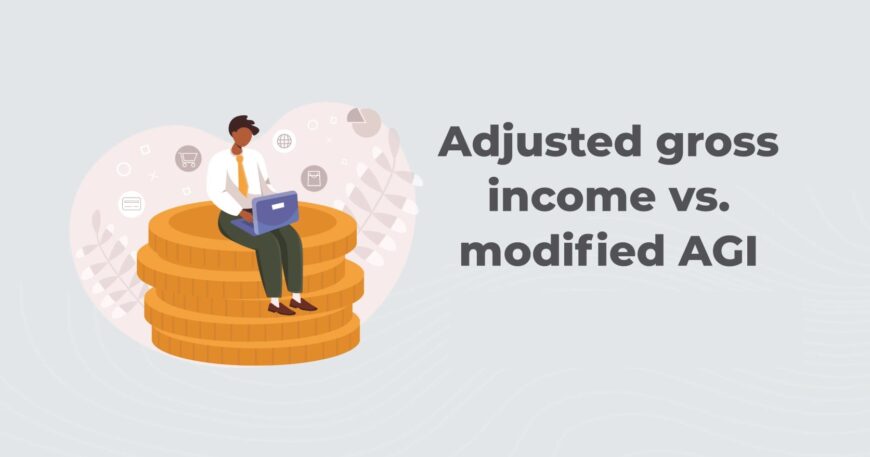Tax season often raises questions about adjusted gross income (AGI) and modified adjusted gross income (MAGI). Understanding these figures is essential for proper financial planning and maximizing tax benefits. Syed Professional Services will demystify AGI and MAGI, explain their significance, and show how to calculate them.
What is adjusted gross income (AGI)?
AGI represents your total taxable income after deducting specific adjustments. It is a critical figure used to determine:
- Your tax bracket.
- Eligibility for tax credits and deductions.
- Contributions to retirement accounts like IRAs.
By understanding AGI, you can better plan your finances and reduce tax liabilities.
Components of Adjusted Gross Income
AGI includes various income types:
- Earned income: wages, salaries, and tips.
- Unearned income: interest, dividends, and capital gains.
- Other income: alimony received (pre-2019 divorces), rental income, and business earnings.
It also factors in deductions like:
- Educator expenses.
- Student loan interest.
- Contributions to traditional IRAs.
Adjusted Gross Income on W-2 Forms
Your W-2 form is pivotal for determining AGI. The “Wages, tips, other compensation” box (Box 1) provides the starting point. From there, adjustments like retirement contributions and health savings account (HSA) deductions refine your AGI.
How to Calculate Adjusted Gross Income
- Gather Income Details: Collect income statements, including W-2s, 1099s, and other relevant documents.
- Add Income Sources: Combine wages, interest, dividends, and other taxable earnings.
- Subtract Deductions: Deduct adjustments such as HSA contributions or tuition-related expenses.
Formula:
AGI = Total Income – Adjustments
Modified Adjusted Gross Income (MAGI)
MAGI starts with AGI but includes certain adjustments added back, such as:
- Foreign earned income exclusions.
- Tax-exempt interest.
- Social Security benefits (for some filers).
MAGI is crucial for determining eligibility for:
- Roth IRA contributions.
- Premium tax credits under the Affordable Care Act.
Calculating Modified Adjusted Gross Income
To calculate MAGI:
- Start with AGI.
- Add back items like tax-exempt interest or foreign income exclusions.
- Ensure accuracy by using IRS guidelines or professional help.
Importance of AGI in Financial Planning
AGI serves as a gateway to understanding your tax situation:
- It determines your taxable income bracket.
- It influences your ability to claim deductions and credits, such as the Child or American Opportunity Tax Credit.
Tax Credits and Adjusted Gross Income
Some tax credits tied to AGI include:
- Earned Income Tax Credit (EITC): Based on your AGI and filing status.
- Education credits include the Lifetime Learning credit and the American Opportunity credit.
Tools to Calculate AGI and MAGI
- Online calculators: quick and convenient.
- Tax preparation software: automates calculations.
- Professional services: Syed Professional Services ensures accuracy and maximizes deductions.
Consulting Professionals for AGI and MAGI
Missteps in calculating AGI or MAGI can lead to underpayment, penalties, or missed opportunities. Professional services like Syed Professional Services offer personalized support to ensure compliance and optimize tax savings.
FAQs About Adjusted Gross Income (AGI)
1. What is AGI on W-2?
AGI starts with the wages in Box 1 of your W-2, adjusted for specific deductions.
2. Is MAGI always higher than AGI?
Yes, MAGI is typically higher due to adjustments added back to AGI.
3. How do retirement contributions affect AGI?
Contributions to traditional IRAs reduce AGI, lowering taxable income.
4. Do tax-exempt incomes count in AGI?
Tax-exempt incomes like municipal bond interest are excluded from AGI but included in MAGI.
5. What happens if I miscalculate AGI?
Incorrect AGI can result in filing errors, missed credits, or penalties.
6. Why is MAGI important for tax benefits?
MAGI determines eligibility for critical benefits like Roth IRA contributions and ACA Premium Tax Credits.



